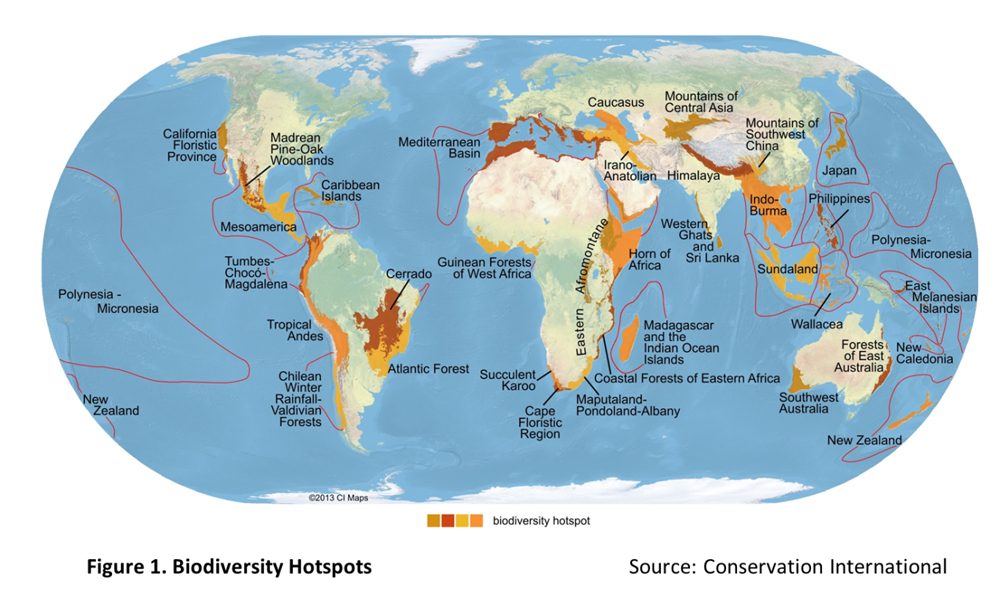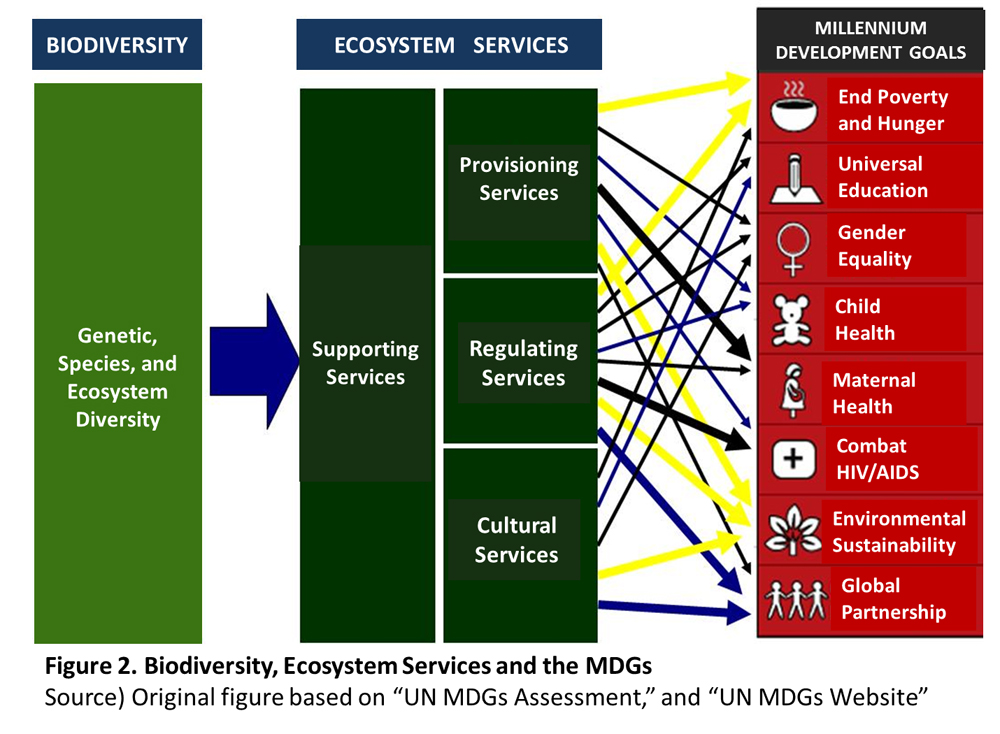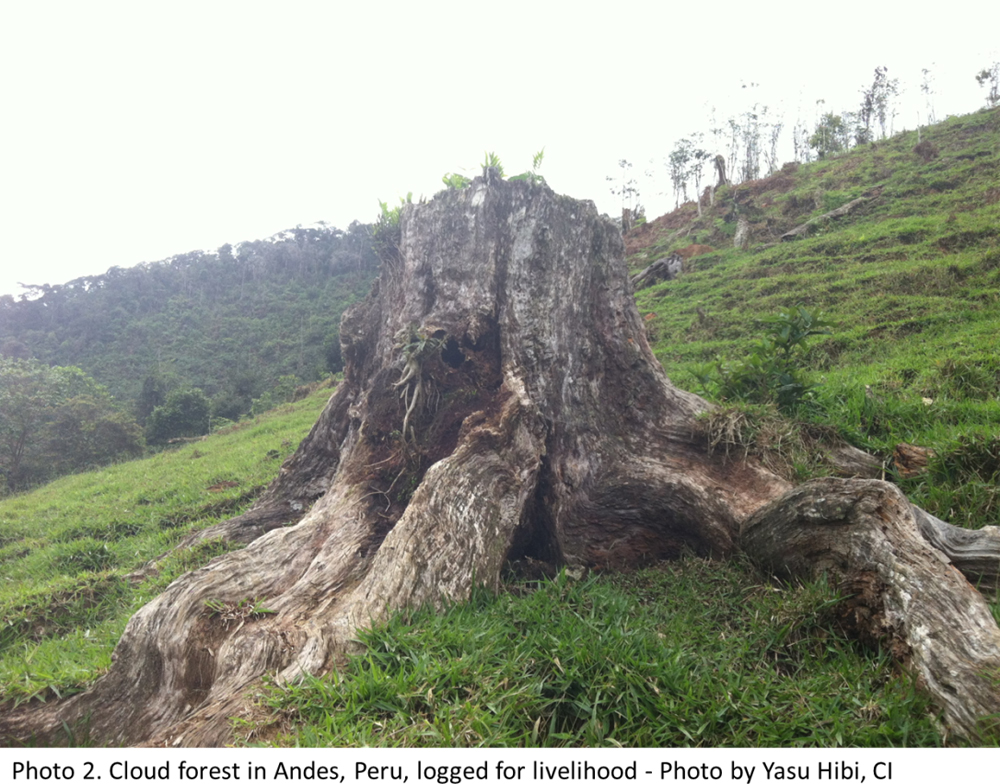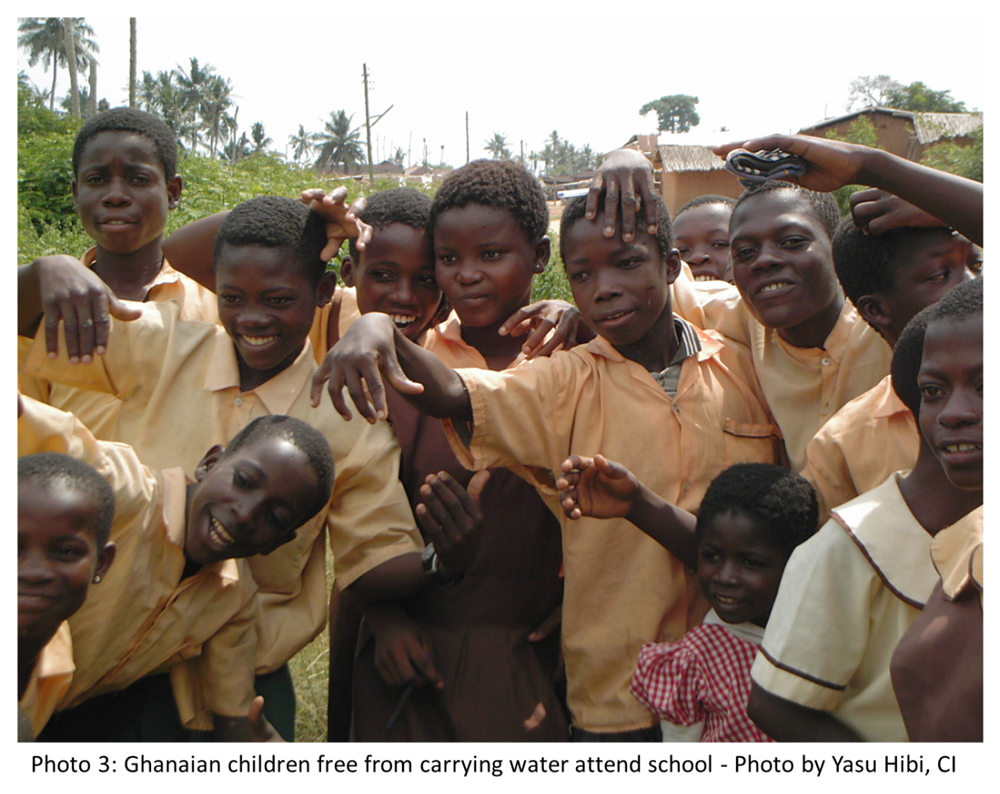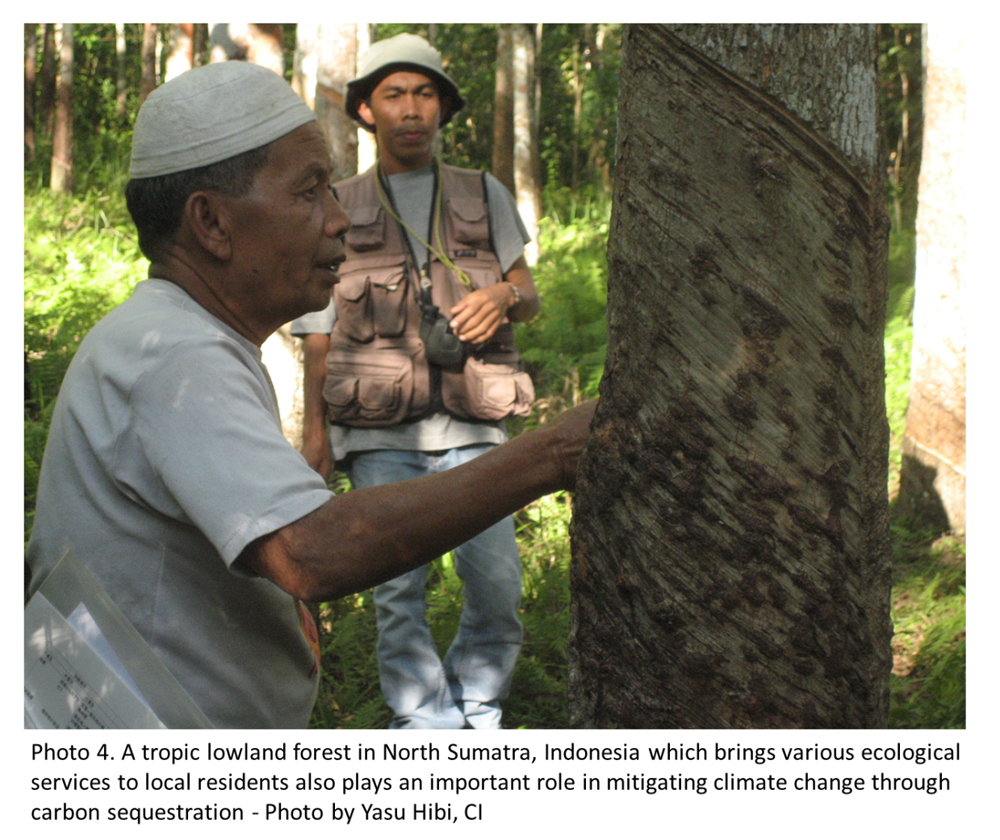Biodiversity and Sustainable Development: Beyond Poverty Alleviation
- Yasushi Hibi
- Managing Director and Vice President for Japan Program, Conservation International
From MGDs to SDGs
The Millennium Development Goals (MDGs) adopted at the United Nations General Assembly (UNGA) in 2000 say in their Target 1 to “halve, between 1990 and 2015, the proportion of people whose income is less than $1.25 a day, and the proportion of people who suffer from hunger.” The year 2015 is the target year, and Target 1 is said to be almost achieved.
On the other hand, some out of the eight targets established in the MDGs are still yet to be achieved, including Target 7B, “Reduce biodiversity loss, achieving, by 2010, a significant reduction in the rate of loss.”
At the upcoming UNGA this year, Sustainable Development Goals (SDGs), which will build upon the Millennium Development Goals and converge with the post 2015 development agenda, providing an international development framework until 2030, will be adopted. The SDGs zero draft consists of 17 goals and 169 indicators (targets) for poverty eradication and the sustainable development of humanity including Goals 14 and 15 which directly commit to the conservation of biodiversity.
Ecosystem Services Supporting Livelihood, Industry, Economy and Culture
Why does biodiversity relate to the MDGs and SDGs? Originally, biodiversity is a concept under biology, referred to as “diversity within species, between species and of ecosystems.” But recently, biodiversity is increasingly being understood through the concept of “ecosystem services” or in more plain language “nature’s blessings,” which are various benefits essential for humans provided by natural environments sustained by biodiversity.
Ecosystem services consist of “Provisioning Services” which provide natural/biological resources such as foods, water, timbers or fibers, “Regulating Services” which include stabilization of climate, purification of water, mitigation of natural disasters, sequestration of CO2, pollination, and disease control, “Cultural Services” which offer eco-tourism values, landscape/aesthetic values and religious/ethical values and “Supporting Services” which provide nutrient circulation, soil composition and photosynthesis. Such ecosystem services provide us with oxygen, water, nutrients, clothing, food, housing, and materials and resources, which are the foundations for economic and cultural activities. They also provide us with environmental conditions, which support health, security, good social relations, and freedom of choice and action. These services are not only limited to the people who live close to nature or conduct industrial activities directly making use of nature, but also extend to people living in big cities or developed countries like Japan. We all benefit, directly or indirectly, from ecosystem services and thus biodiversity.
However, the economic values of these essential services provided to humans and society by nature have not been recognized in the conventional economic framework. Recent studies show that ecosystem services benefiting humans globally can be valued to the order of one hundred and twenty five billion (12,500,000,000) US dollars per year. This amount is almost double world’s total annual GDP.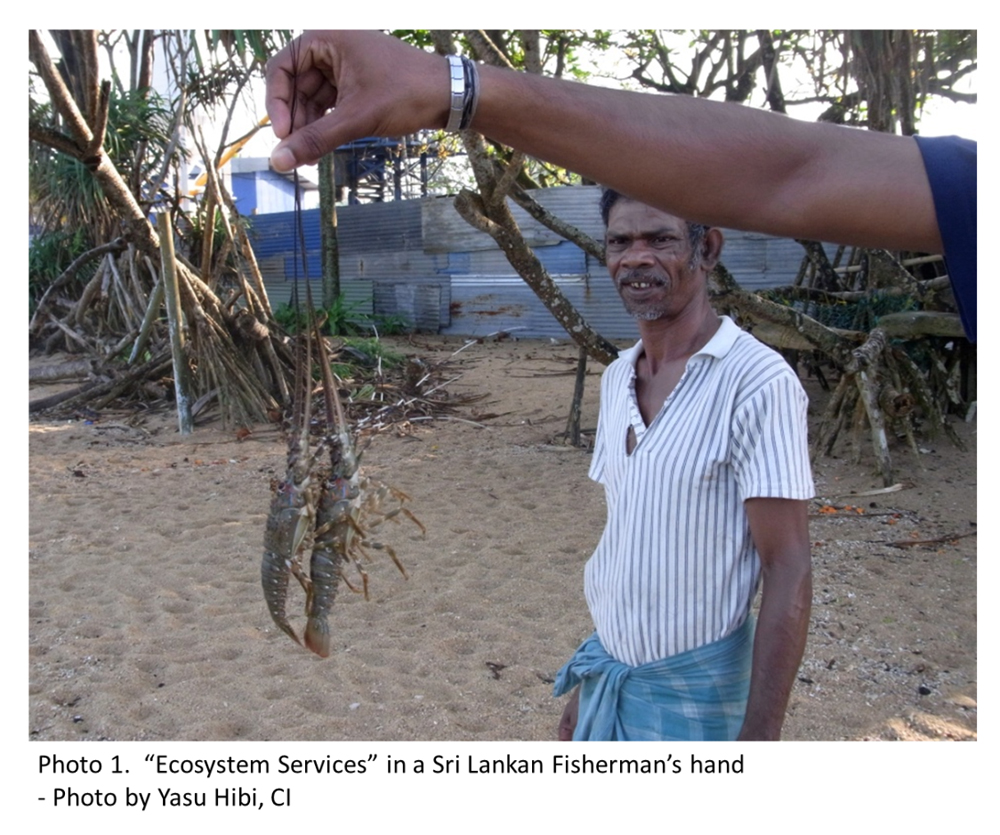
Biodiversity and Poverty Alleviation
People in developing countries are more dependent on ecosystem services than those in developed countries. It is said that 2 billion people live off ecosystem services directly and most of them are poor with incomes of less than $2 a day. Significant portion of such people live in the world’s 35 biodiversity hotspots specified as places rich in biodiversity but also highly threatened.
People’s lives, livelihoods, survival and culture in developing countries, especially in rural regions, are in many cases directly dependent on “Provisioning Services” which provide nutrients (through agriculture and fisheries), timbers, fibers, energy sources (fuelwoods), medicinal plants, “Regulating Services” such as purification of water resources, water recharge, climate regulation and disaster mitigation, and “Cultural Services” which support religious/ethical and aesthetic values. In other words, people in rural villages of developing countries benefit from directly interacting with nature one way or another.
Based on these ideas, it could be said that biodiversity is not only a target for MDG7 but also contributes to the MDGs overall. Therefore, it is quite natural that conservation of biodiversity is now integrated into the SDGs.
Biodiversity Loss is Accelerating
While biodiversity is essential not only to sustainable development but to survival of humans of all regions, developing or developed, the loss of biodiversity is accelerating. It is said that one plant or animal species becomes extinct every 20 minutes. This extinction rate is approximately 1,000 times higher than that of pre-human times. The Global Biodiversity Outlook 4 reports that “pressures on biodiversity will continue to increase at least until 2020, and that the status of biodiversity will continue to decline.” It particularly states that “the continued decline of many ecosystems providing multiple services, especially to the poor and vulnerable, suggests the need for significant additional action.”
Biodiversity is not distributed equally on earth, but is mainly concentrated in tropical ecosystems in developing countries as represented in the distribution of the abovementioned biodiversity hotspots, thus majority of the biodiversity loss is taking place in the tropical regions in developing countries. Loss of global biodiversity can be attributed to conversion of tropical rainforests to farmlands, unsustainable (in many cases illegal) use of timber and fishery resources and the adverse effects of climate change.
For example, in the Alto Mayo Protection Forest, one of the project sites of Conservation International, located in the upper reach of the Amazon River in Peru, those with minimum incomes move into the forested areas in need for land for cultivation or grazing, or for timber. As the agricultural methods practiced here are quite simple, the people here depend their livelihoods on the ecosystem services such as lush water resources, the stable climate, and the rich soils, which are all supported by the biodiversity rich cloud forests of Alto Mayo. However, forest loss associated with the population increase in the region is accelerating. This is because the lives of the inhabitants are dependent on the slash-and-burn farmlands converted from the forests. Access to water and stabilization of local climate are being lost. And of course, the rich biodiversity of Alto Mayo is in great danger.
Biodiversity Conservation Contributes to Sustainable Development
Conservation and the sustainable use of biodiversity are essential for alleviating poverty in developing countries. The conservation of biodiversity enables diversified source of livelihoods, increased incomes, improved public health, and mitigation of vulnerability against natural disasters as well as social unrest. It also contributes to the SDGs aiming at the direct alleviation of poverty in developing countries. In addition, biodiversity globally brings benefits including CO2 sequestration by tropical forests, purification of air and water, and provision of natural and genetic resources.
CI has supported communities adjacent to the Kakum National Park in Central Ghana located in the Guinean Forests of West Africa Biodiversity Hotspot through a sustainable cacao project which supports communities converting to sustainable cacao agriculture, a major industry for Ghana. While the project aims at the conservation of biodiversity including the protection of endangered species such as the African Forest elephants (Loxodonta cyclotis) and Diana monkeys (Cercopithecus diana), it also contributes to improving livelihoods in the communities and mitigating climate change. As a result of the project, the groundwater level in the region has recovered by forest conservation and the water quality has improved by the reduction in the use of chemical fertilizers and pesticides. With improved access to clean water, children can now go to school as they no longer need to spend time carrying water to their home from distant sources. While many children in the region, especially those in urban area, are still prevented from going to school - I frequently witnessed such children begging for money, where I was tempted to give some help, which I didn’t as a local partner NGO staff had told me never to do so as it will not help them eventually - I was happy to see children from the project participating villages in new school uniforms cheerfully going to school. Biodiversity is not only important for the ecosystem, but provides education opportunities for children, develops their future. Conservation is an investment in a country’s future.
Considering that growth in world population and economy will occur mainly in developing countries, conservation of biodiversity, especially those in developing countries, is essential for global sustainable development and eventually survival of humankind. In order to achieve the Aichi biodiversity Targets and the SDGs, the world needs to move beyond providing conservation support to developing countries through conventional official development assistance (ODA), which by the way are still very essential, but transform economic and social systems to those that recognize and value the true benefits of nature. Now that more than half of the world’s GDP is already being generated by developing and emerging countries, the role of the private sector through markets and foreign direct investments is important than ever for biodiversity conservation. Industries need to be “rewired” so that the supply chains of products and value chains of their businesses become not only sustainable but business activities per se contribute positively to conservation, not negatively.
Profile of Yasushi Hibi
Yasushi Hibi has served as Managing Director for Japan Program, Conservation International since April 2003 after holding positions as business consultant at Nomura Research Institute, Ltd. and as environment program officer at the United Nations Development Programme (UNDP). In addition, Mr. Hibi has been engaged in developing partnerships with international institutions, governments and firms in order to create a sustainable society based on the conservation of biodiversity. He especially focuses on the issues of biodiversity conservation contributing to poverty reduction and the relationship between climate change and biodiversity. He also holds several positions such as vice president of the International Union for Conservation of Nature and Natural Resources (IUCN) Japan Committee, member of the Group of Experts for CBD/ Global Environment Facility (GEF)-7 Needs, member of the Advisory Board of Japan International Cooperation Agency (JICA) Social and Environmental Consideration, member of the Selection Panel and Environmental Advisory for Japan Bank for International Cooperation (JBIC), member of the Selection Panel for The MIDORI Prize for Biodiversity, councilor of the Sustainable Green Ecosystem Council (SGEC), councilor of More Trees, lecturer for Sophia, Waseda and Gakushuin universities, and advisor for a number of firms. His authored/co-authored books include: “Hotspots Revisited,” “Seitaigaku kara mita Hogoryoiki to Tayouseihozen (in Japanese, Protected Areas and Diversity Conservation from Ecology Perspective),” “CSR Keiei no nakani Seibutsutayouseihozen wo kumikome! (in Japanese, CSR Integration of Biodiversity Conservation in Business Management),” “Shiranakya Yabai, Seibutsutayousei no Kisochishiki (in Japanese, Basic Knowledge We Need to Know about Biodiversity,” and “NGO kara mita Sekai Ginko (in Japanese, The World Bank from NGO’s Perspective).” He graduated from Konan University and earned a master degree from Duke University.







